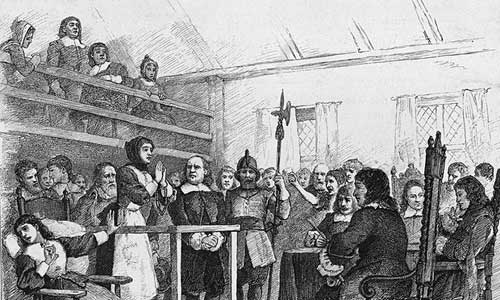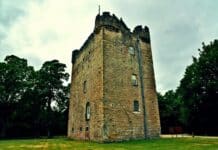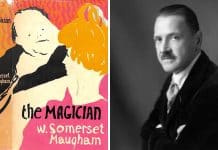L.H. DAVIES describes how Scottish witchfinders were brought down to Newcastle in 1649 to deal with some “witches” (Read until the end because there is a happy ending!)

It was on 26th March 1649, during a slight dip in the activities of the Inquisition throughout Europe, that a petition was signed in Newcastle to arrest all suspected witches and bring them to trial.
Two of the cities Sergeants, Thomas Shevill and Cuthbert Nicholson were therefore sent to Scotland to procure the services of a ‘so called’ Witchfinder.
Though seemingly unnamed in any historical reference, the man agreed to travel (all expenses paid) to Newcastle. He was to charge 20s (£1) for every witch condemned.
On his arrival 30 suspects were brought forward and the Witchfinder duly announced his tried and tested method- Pin pricking. He would push a pin into the flesh of the accused and if they did not bleed they would be found innocent. Of course many a greedy man in those times would find methods by which they could obtain more money from extra convictions. One such method being the pins used to prick the accused would be retractable; moving inside itself as pressure was applied, giving the appearance of entering the flesh when in fact it had not.
This particular Witchfinder informed Newcastle’s Deputy Governor, Lieutenant Colonel Paul Hobson, that he had been imbued with the ability to recognise a witch purely by their appearance. A statement which would be somewhat frowned upon these days.
Though seemingly unnamed in any historical reference, the man agreed to travel (all expenses paid) to Newcastle. He was to charge 20s (£1) for every witch condemned.
It was at this point that he indicated to an elderly woman and though Hobson stated it was impossible she were a witch, the Witchfinder demanded she be tested.
The unfortunate woman was dragged forward and her clothes thrown over her head. Hobson noted that in her shame the woman suffered a severe blush, causing her blood to rush to her head, so as when the pin was stabbed into her thigh, no blood was evident. Her situation seemed all the more precarious when she failed to answer when the Witchfinder demanded to know why she did not bleed. Hobson waited until the woman recovered before demanding the test tried again, this time with her clothes lifted only to her thigh.
No longer in a state of shame, the woman’s blood had returned to her legs and as the pin was pushed into her skin, blood gushed down her leg, acquitting her of all accusations.
Of those tried that day, 14 were convicted as witches, one as a wizard and all were hung on Town Moor.
The Witchfinder was paid 3s 4d to examine, 1.5s for trying them, and the 20s for each condemned, successfully gaining him a small fortune for his troubles.
On his return to Scotland, the Witchfinder, upon gaining higher reputation, stopped off in Northumberland charging 60s for each accused that was condemned. However, after many complaints, Henry Ogle a Justice for the Peace questioned him and his methods. He escaped back to Scotland but it seemed there also many had complaints against him and he was promptly imprisoned.
He was eventually tried for ‘villainy’ and on the gallows publicly confessed to have sent 222 men and women to their deaths for at least 20 shillings each; that’s 4440 shillings, equating to £222 modern money. This would have made him an astonishingly rich man in his time.







